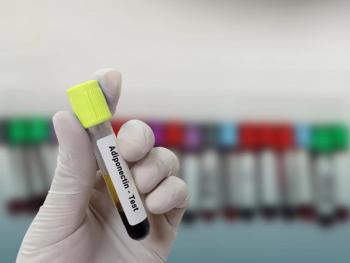
Malignant Cells Can Predict Relapse After Treatment in Children With ALL
Researchers have identified malignant cells that, if present, can predict whether a patient with acute lymphoblastic leukemia (ALL) will relapse after treatment.
An analysis of individual cancer cells has allowed researchers at the Stanford University School of Medicine to identify which children with acute lymphoblastic leukemia (ALL) are at risk of relapse after treatment. The findings were
The researchers used mass cytometry to examine cancer cells one at a time, and using that data, they were able to identify a subset of malignant cells that predispose a patient to relapse. The method predicted relapse with 85% accuracy, up from 66% accuracy achieved by the current risk-stratification method.
“Acute lymphoblastic leukemia is a very well-characterized cancer that has a robust risk-prediction measure already, but the final risk of relapse is usually not known until a few months into treatment, and there are still patients who get missed,” Kara Davis, DO, assistant professor of pediatric hematology and oncology at Stanford School of Medicine and a senior author on the study,
The new Developmentally Dependent Predictor of Relapse technique can identify which patients with ALL need a different approach. The study focused on B-cell precursor ALL, which is the most frequently found type of pediatric ALL. Chemotherapy drugs cure the majority of these patients, but approximately 10% to 20% of patients relapse. Of those who relapse, 40% to 80% die of the disease within 5 years, according to Stanford’s press release.
The researchers tested bone marrow samples of 60 patients with ALL at their time of diagnosis. They analyzed 3 to 15 years’ worth of follow-up records, which included information on whether or not the patient had relapsed.
The researchers then compared the leukemic cells with similar normal cells and found that malignant cells in 2 stages of B-cell maturation—pro-B2 and pre-B1 stages—with certain signaling behavior at the time of diagnosis almost certainly predicted patients who would relapse after standard chemotherapy. Now, researchers are looking for existing drugs that can target those malignant cells.
The method still has to be validated in a larger number of patients, and the researchers plan to evaluate whether the same approach can predict relapse in other cancers. According to Davis, more precise risk prediction benefits patients who are at both high and low risk for relapse.
“We really need to personalize treatment to leukemia patients better than we do now,” said graduate student Zinaida Good, the study’s co-lead author. “There is a lot of room for improvement here. This study makes a contribution to our ability to stratify patients better and not treat everybody the same way.”
Reference
Good Z, Sarno J, Jager A, et al. Single-cell developmental classification of B cell precursor acute lymphoblastic leukemia at diagnosis reveals predictors of relapse [published online March 5, 2018]. Nat Med. doi: 10.1038/nm.4505.
Newsletter
Stay ahead of policy, cost, and value—subscribe to AJMC for expert insights at the intersection of clinical care and health economics.












































